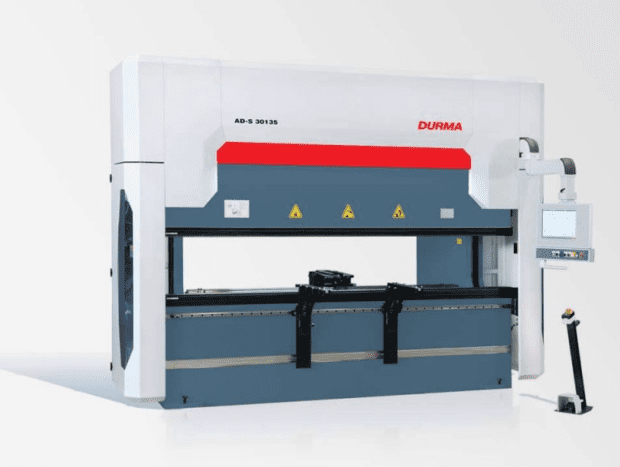Press Brake Types: A Quick Guide

As you may know, press brakes are large machines that are used for bending plates and sheets of metal. These machines perform precise, predetermined folds and bends by clamping the sheet metal down and into a notch, essentially making use of the “punch and die” concept. The main benefit of cutting the metal after it has been hardened is that it allows for far more precision than trying to make slices or cuts while it’s in a molten state. In this quick guide, we’ll cover the main types of press brakes available on the market:
1. Hydraulic
As the name implies, hydraulic press brakes use hydraulic air pressure to apply extensive downward or upward force. One of the main advantages of using this type of press brake is that it provides very accurate pressure control and a smooth pressing action. In fact, consistent pressure tonnage is one of the features that sets the hydraulic Durma press brake apart from other types on this list. In terms of pricing, strictly hydraulic press brakes provide a nice medium between the lower end of the spectrum (manual/mechanical) and the higher end (electro-hydraulic).
2. Manual
Manual press brakes are the most commonly used type due to their affordability. However, they’re not the most powerful or precise. Furthermore, they’re also the most difficult to operate because you have to check the size and accuracy of each bend and you’ll usually need to make some small adjustments within a large batch. These are better for bending smaller plates or sheets of thin metal, as trying to bend many thick sheets with these can become a laborious challenge. However, the use of a flywheel to facilitate extensive leverage makes the cranking motion surprisingly easy to perform, even on a highly repetitive basis.
3. Electro-Hydraulic
These press brakes combine electricity and hydraulic pressure to achieve the highest precision and efficiency of any type. This type also allows for the most automated and simplified work processes because it can be programmed to perform many bends consecutively without human intervention. This is the ideal option for modern manufacturers that demand the utmost in energy-efficiency and productivity. Most electro-hydraulic press brakes come with a Computer Numerical Control (CNC) controller, giving the operator precise control over every feature of the machine, including back gauge pressure, bend length, and every other possible function.
Know Your Needs Before You Buy
Advanced press brakes are by no means cheap, so it’s always wise to make sure you’re buying one that will fulfil your metal bending needs for the foreseeable future. After all, you don’t want to be put in the position of having to sell your current model and buy another one later one. Thus, as a general rule of thumb, look for a press brake that will be capable of facilitating larger bends than your initial use case. That way, you’ll have a machine that will continue to be useful beyond the short-term applications that you have in mind.
